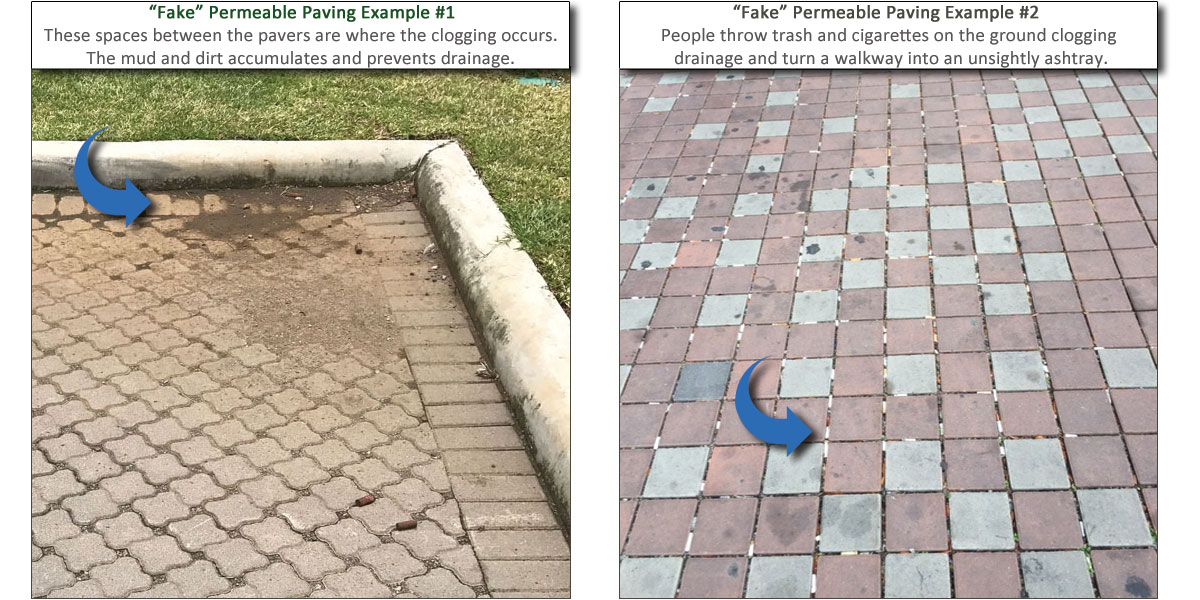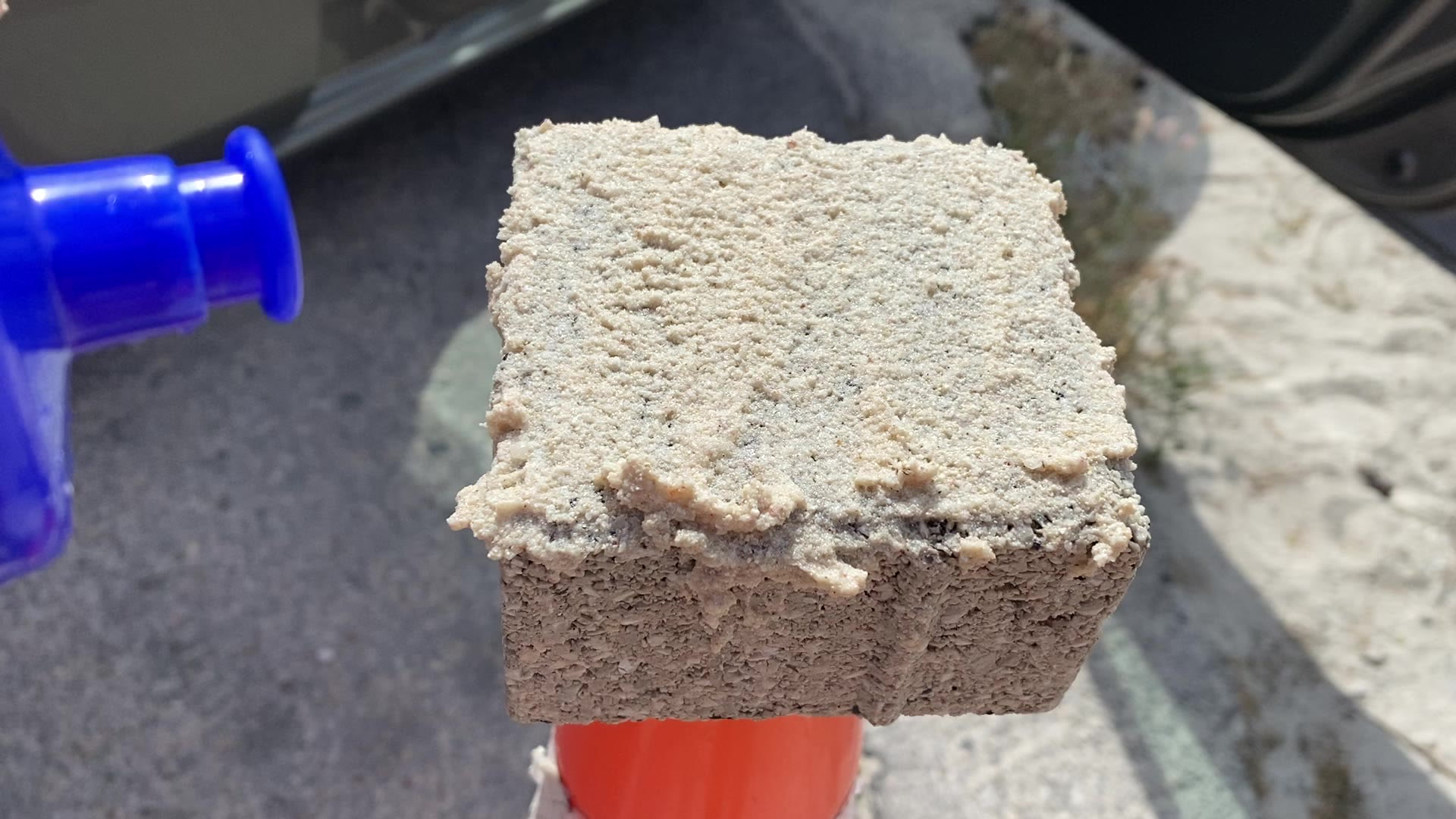True Pervious Systems – True Solutions.
Fake vs Real Permeable Pavers
Don’t be fooled. There’s a difference in the permeable pavers in the marketplace.
More than ever companies and homeowners are choosing to install permeable or porous pavers on their driveways, public spaces, patios and around swimming pools to help direct rainwater away from storm sewer systems and back into the natural ecosystem. They also want to prevent the buildup of water on the surface so they can avoid the inconvenience of puddles and slippery surfaces.
But many suppliers are selling the concept of a permeable paving solution without having a true solution. In the graphic below you’ll see a typical “fake” solution – taking a regular concrete, asphalt or interlocking brick – adding gravel between the bricks – and calling it permeable.
The problem is that the brick itself is not porous. The rainwater is supposed the fall between the bricks and drain into the soil. There is no true storm management system for the water. Often in heavy rainfall, the surface still has puddles because there is nowhere for heavy rainfall to go.
With a “real” permeable paver system like hydroPAVERS®, the storm management system is built right into the construction.

Permeable paving is a porous paving system that uses a range of sustainable materials and techniques for pervious or porous pavements. The base and subbase allow for the movement of stormwater through the surface. In addition to reducing runoff, this effectively traps suspended solids and filters pollutants from the water.
This video demonstrates the red wine being absorbed directly into the hydroPAVERS®. The paver surface may be moist, but no puddles develop, as all the liquid will be retained until saturation. Fully saturated is equivalent to a ¼” rain event, after which it will then drain into the base below, if the rain continues. Otherwise, the retained water begins to evaporate into the air by warmth and wind which dries the surface.
Did You Know
According to EPA, between 900 and 1100 kg (1984 and 2425 lbs) of CO2 is emitted for every 1000 kg (2205 lbs.) of Portland cement produced in the U.S.
According to the most recent survey of Portland Cement Association (PCA) members, an average of 927 kg (2044 lbs.) of CO2 are emitted for every 1000 kg (2205 lbs.) of Portland cement produced in the U.S.
The production of hydroPAVERS®
Uses recycled ceramic tiles, directly from post industrial (diverted from landfill) to our use to create hydroPAVERS®
56 KG or 123.5 pounds CO2 per Ton of pavers
The Comparison
Portland – 20.5 Pounds CO2 per square foot
hydroPAVERS® – 1.15 Pounds CO2 per square foot
Note: 1 Ton Covers ~ 10m2 for either (107.61 Square feet)
Tell Us About Your Project
No matter what the size of your project, we’d love to hear about it. Just fill out the form below.



